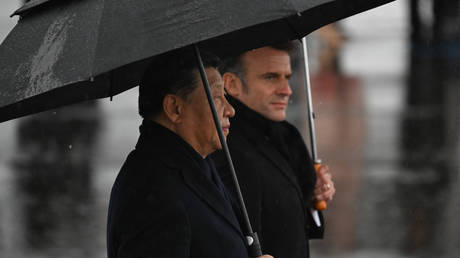What Did European Central Bank Quantitative Easing Accomplish? Not Much
by Peter Schiff, Schiff Gold:

We often criticize the Federal Reserve for its three rounds of quantitative easing. Coupled with artificially low interest rates, Fed QE stimulus — essentially money creation –pumped up all kinds of asset bubbles. Now that the US central bank is trying to tighten, we’re beginning to see the air seep out of those bubbles.
But when it comes to QE, the Federal Reserve has nothing on the European Central Bank. The ECB just announced the end of its QE program this month. The ECB’s QE purchases totaled somewhere in the neighborhood of 2.6 trillion euros. The bank also pushed interest rates below zero. So, what did the EU get for all this stimulus? Not a whole lot.
Economist Daniel Lacalle outlined the abject failure of European Central Bank QE in an article published on the Mises Wire. Here are just a few eurozone datapoints that reveal just how feckless the central bank stimulus program turned out to be.
The EU’s manufacturing PMI stands at a paltry 51.3. In December, the eurozone enjoyed the slowest expansion in factory activity since February 2016. Goods orders dropped for a third straight month, the steepest rate for four years.
Unemployment in the eurozone stands at 8% — double that of the US and comparable economies. The youth unemployment rate remains at 15%.
More than 900 billion euro of non-performing loans remain in the banking system, keeping a trillion euro timebomb in its balance sheets (read). This figure represents 5.1% of total loans compared to 1.5% in the US or Japan.
Deficit spending is rising. Government debt to GDP has risen to 86.8%.
The number of zombie companies -those that cannot pay interest expenses with operating profits- has soared to more than 9% of all large quoted firms, according to the BIS.
Sovereign states have saved around one trillion euro in interest expenses. But they spent all those savings. Today, almost no eurozone country can absorb a modest rise in interest rates. Meanwhile, Italy, Spain, France, Portugal, Slovenia, and others are demanding more spending and more deficits.
There is no real secondary market demand for eurozone sovereign bonds at these yields. At the peak of its quantitative easing program, the Federal Reserve was never the sole buyer of Treasuries. There was always a relative secondary market. In the Eurozone, the ECB has been 7 seven times the net issuances of sovereigns. No investor is likely to buy eurozone sovereign bonds at these yields once the ECB steps down.
Eurozone growth and inflation estimates have been revised down again in December. Industrial production has fallen sharply.
So, what has the ECB accomplished? Lacalle came up with a few things.
- Keeping the euro alive. Not a small success, by the way. The risk of break-up has been contained but not eliminated.
- Maintaining government spending at low rates. However, at the expense of savers and salaries.
- Generating a sense of euphoria in financial markets, with high yield and sovereign bonds soaring.
- Wages in the euro-zone have increased below inflation since QE launched and into the third quarter of 2018. In fact, low inflation has been the biggest unintended success of the ECB. It could have been worse.
- The biggest “success” of the ECB has been the massive bailout of governments at the expense of savers.
We also have to agree that Mario Draghi has been reminding governments that they needed to implement structural reforms, use the period of low rates to deleverage and repeating constantly that monetary policy will not work without reforms. No one listened. It was party time, and cheap money attracts bad decisions.”
The eurozone is yet another case of never-ending government stimulus. As Lasalle put it, “The EU has been a Keynesian stimulus machine before, through and after the crisis.”
1) A massive stimulus in 2008 in a “growth and employment plan.” A stimulus of 1.5% of GDP to create “millions of jobs in infrastructure, civil works, interconnections and strategic sectors.” 4.5 million jobs were destroyed and the deficit nearly doubled.
Between 2001 and 2008, money supply in the euro-zone doubled.
2) Two massive sovereign bond repurchase programs with Trichet as ECB President, interest rates down from 4.25% to 1% since 2008. Poor Trichet. Trichet purchased more than 115 billion euros in sovereign bonds.
3) An additional mega stimulus from the ECB, in addition to the TLTRO liquidity programs with Draghi, which has taken sovereign bonds to the lowest yields in history and purchased almost 20% of the total debt of some major states.
Loading...



